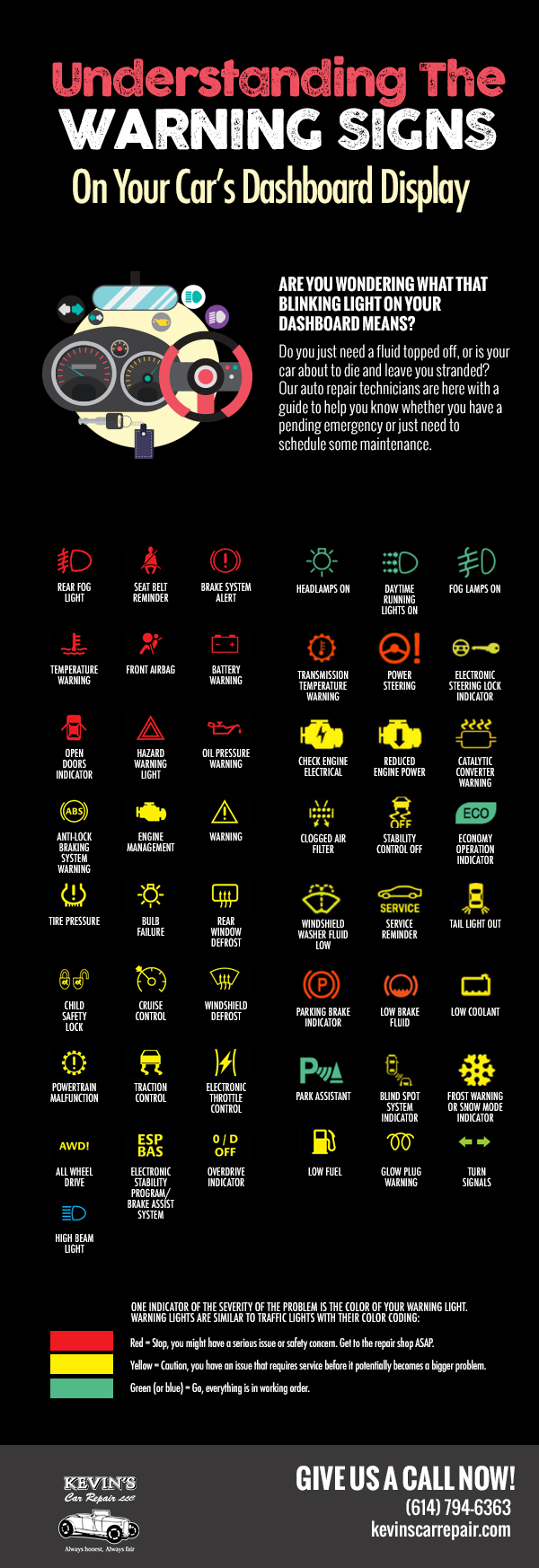An Essential Guide For Beginners To Make Sense Of Your Car'S Caution Lights
An Essential Guide For Beginners To Make Sense Of Your Car'S Caution Lights
Blog Article
Authored By-Shah Emery
When you lag the wheel, those little warning lights on your automobile's dashboard can be fairly puzzling. What do they suggest, and should you be concerned? Understanding these signals is crucial for your lorry's well-being, but it does not need to be a difficult job. By deciphering the mystery behind each light, you'll be furnished to deal with possible issues properly and maintain your auto running efficiently. So, next time a caution light flashes, don't panic - arm on your own with expertise and take control of the situation.
Value of Automobile Warning Lights
Recognizing the importance of your car's warning lights is crucial for keeping your automobile's health and safety. These lights work as your cars and truck's communication system, informing you to potential issues that might threaten your safety when driving or result in costly repair services if neglected. By focusing on these warnings, you can deal with problems early and prevent additional damage to your lorry.
Overlooking warning lights can result in major consequences, such as engine failing, brake malfunctions, or even mishaps. These lights are created to inform you of problems varying from low tire pressure to engine malfunctions, offering you the possibility to take action prior to the circumstance worsens. Consistently examining and comprehending these warnings can save you time, money, and guarantee your safety and security while driving.
In addition to keeping you secure, responding immediately to cautioning lights can additionally assist extend the life expectancy of your auto. By attending to concerns at an early stage, you can prevent little troubles from intensifying into major repair work, eventually conserving you money and time over time. Keep in mind, your cars and truck's caution lights are there for a reason - don't overlook them!
Common Warning Lighting and Meanings
When it pertains to driving your vehicle, being aware of common warning lights and their definitions is vital for your safety and security and lorry maintenance. Below are a few usual warning lights you might encounter:
1. ** Examine Engine Light **: This light shows an issue with your engine. Maybe something small like a loosened gas cap or something much more serious like engine misfiring.
2. ** Battery Light **: This light signals a problem with your automobile's billing system. https://www.motorbiscuit.com/5-common-maintenance-diagnostic-trouble-codes-mean/ could show a faulty battery, generator, or other associated parts.
3. ** Oil Pressure Light **: When this light comes on, it implies your engine may be running low on oil or experiencing reduced oil stress, which can lead to engine damage otherwise addressed immediately.
4. ** Brake System Light **: This light shows a concern with your braking system. It could imply low brake liquid levels or a problem with the brake system that requires immediate focus.
Comprehending these common warning lights will certainly assist you identify possible concerns at an early stage and protect against more considerable troubles later on.
Just how to Respond to Warning Lights
In case a caution light brightens on your auto's dashboard, it's vital to react without delay and suitably. When a caution light comes on, the first step is to consult your proprietor's guidebook to understand the certain concern indicated by the light.
Some lights require prompt focus, while others might suggest a much less urgent issue. If truck brake repair is red or flashing, it's normally a sign of a major issue that needs immediate action. In such instances, it's a good idea to pull over securely, shut off the engine, and look for specialist aid.
For yellow or orange caution lights, while they might not call for instant attention, it's still crucial to attend to the hidden concern without delay to avoid further damages. Regular maintenance and examination can help avoid warning lights from coming on suddenly.
Conclusion
Finally, recognizing your auto's caution lights is critical for keeping your car's health and safety. By routinely examining and reacting to these cautions, you can attend to potential concerns early and protect against expensive repair work or safety threats. Keep in mind to consult your proprietor's guidebook for information on different warning lights and always take instant activity for red or flashing lights. Remain aggressive and maintain your automobile running smoothly!
